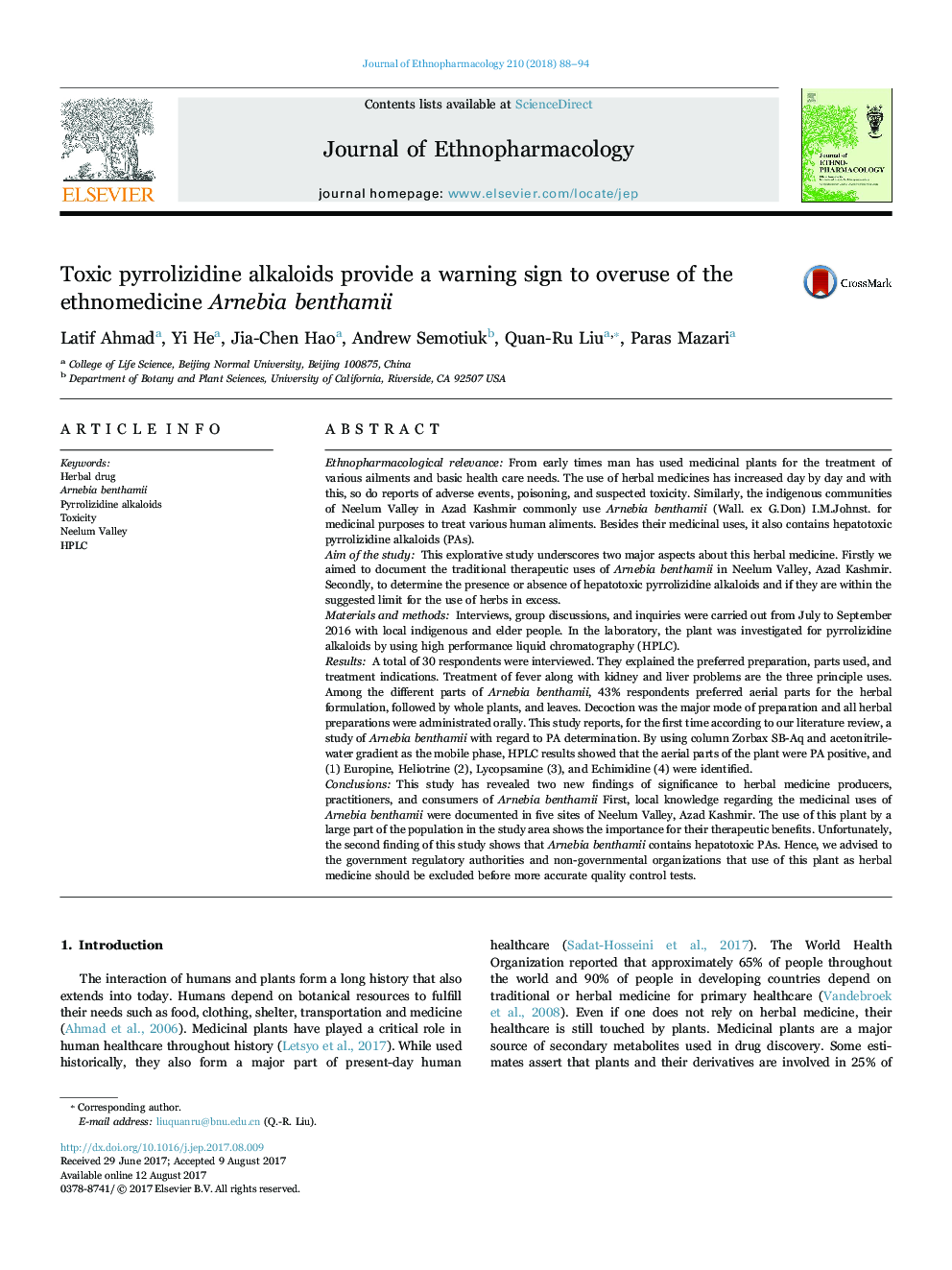| کد مقاله | کد نشریه | سال انتشار | مقاله انگلیسی | نسخه تمام متن |
|---|---|---|---|---|
| 5555934 | 1560352 | 2018 | 7 صفحه PDF | دانلود رایگان |
Ethnopharmacological relevanceFrom early times man has used medicinal plants for the treatment of various ailments and basic health care needs. The use of herbal medicines has increased day by day and with this, so do reports of adverse events, poisoning, and suspected toxicity. Similarly, the indigenous communities of Neelum Valley in Azad Kashmir commonly use Arnebia benthamii (Wall. ex G.Don) I.M.Johnst. for medicinal purposes to treat various human aliments. Besides their medicinal uses, it also contains hepatotoxic pyrrolizidine alkaloids (PAs).Aim of the studyThis explorative study underscores two major aspects about this herbal medicine. Firstly we aimed to document the traditional therapeutic uses of Arnebia benthamii in Neelum Valley, Azad Kashmir. Secondly, to determine the presence or absence of hepatotoxic pyrrolizidine alkaloids and if they are within the suggested limit for the use of herbs in excess.Materials and methodsInterviews, group discussions, and inquiries were carried out from July to September 2016 with local indigenous and elder people. In the laboratory, the plant was investigated for pyrrolizidine alkaloids by using high performance liquid chromatography (HPLC).ResultsA total of 30 respondents were interviewed. They explained the preferred preparation, parts used, and treatment indications. Treatment of fever along with kidney and liver problems are the three principle uses. Among the different parts of Arnebia benthamii, 43% respondents preferred aerial parts for the herbal formulation, followed by whole plants, and leaves. Decoction was the major mode of preparation and all herbal preparations were administrated orally. This study reports, for the first time according to our literature review, a study of Arnebia benthamii with regard to PA determination. By using column Zorbax SB-Aq and acetonitrile-water gradient as the mobile phase, HPLC results showed that the aerial parts of the plant were PA positive, and (1) Europine, Heliotrine (2), Lycopsamine (3), and Echimidine (4) were identified.ConclusionsThis study has revealed two new findings of significance to herbal medicine producers, practitioners, and consumers of Arnebia benthamii First, local knowledge regarding the medicinal uses of Arnebia benthamii were documented in five sites of Neelum Valley, Azad Kashmir. The use of this plant by a large part of the population in the study area shows the importance for their therapeutic benefits. Unfortunately, the second finding of this study shows that Arnebia benthamii contains hepatotoxic PAs. Hence, we advised to the government regulatory authorities and non-governmental organizations that use of this plant as herbal medicine should be excluded before more accurate quality control tests.
241
Journal: Journal of Ethnopharmacology - Volume 210, 10 January 2018, Pages 88-94
